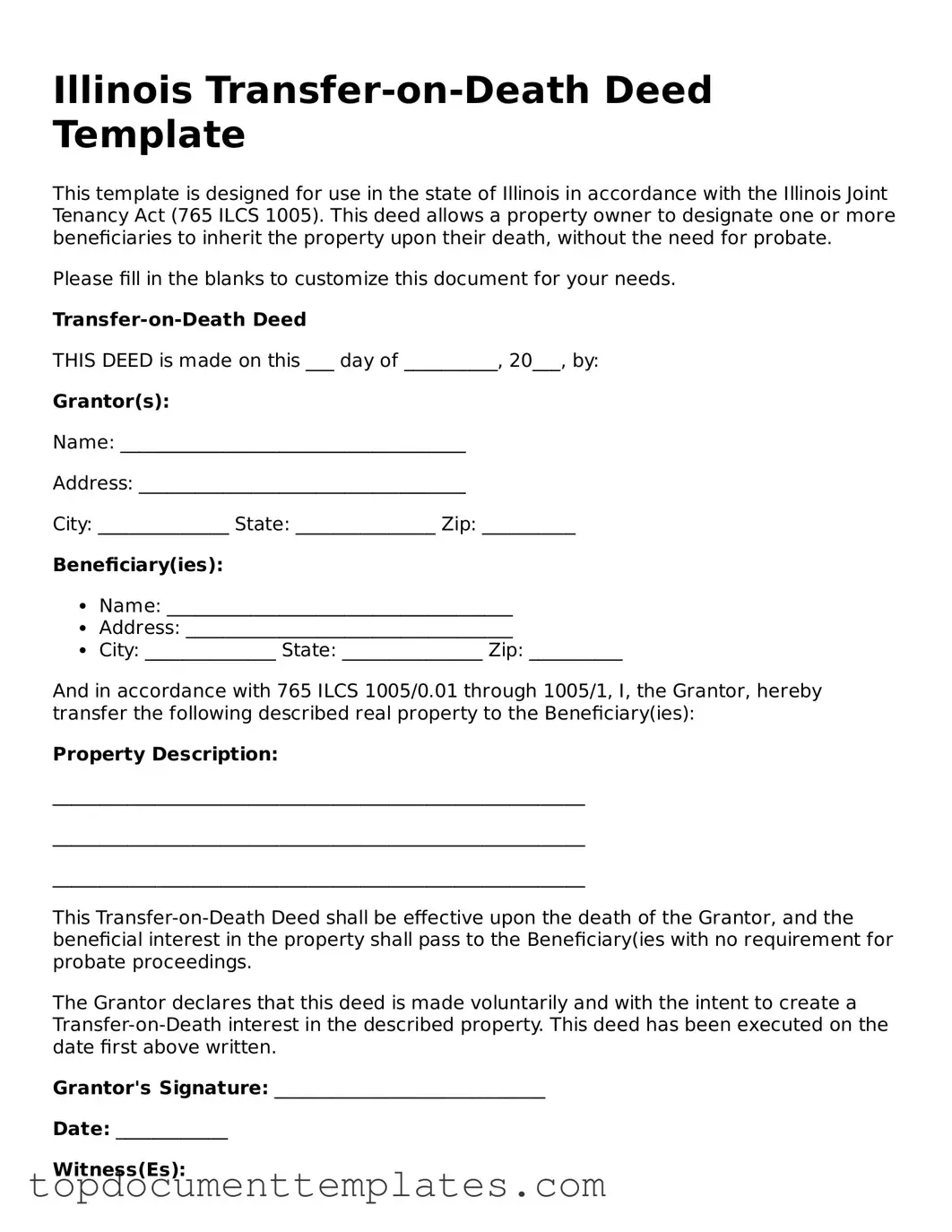Valid Transfer-on-Death Deed Form for Illinois State
The Illinois Transfer-on-Death Deed is a legal document that allows property owners to transfer their real estate to beneficiaries upon their death, without going through probate. This form simplifies the process of passing on property, ensuring that your wishes are honored. To get started on filling out this important form, click the button below.
Open This Form
